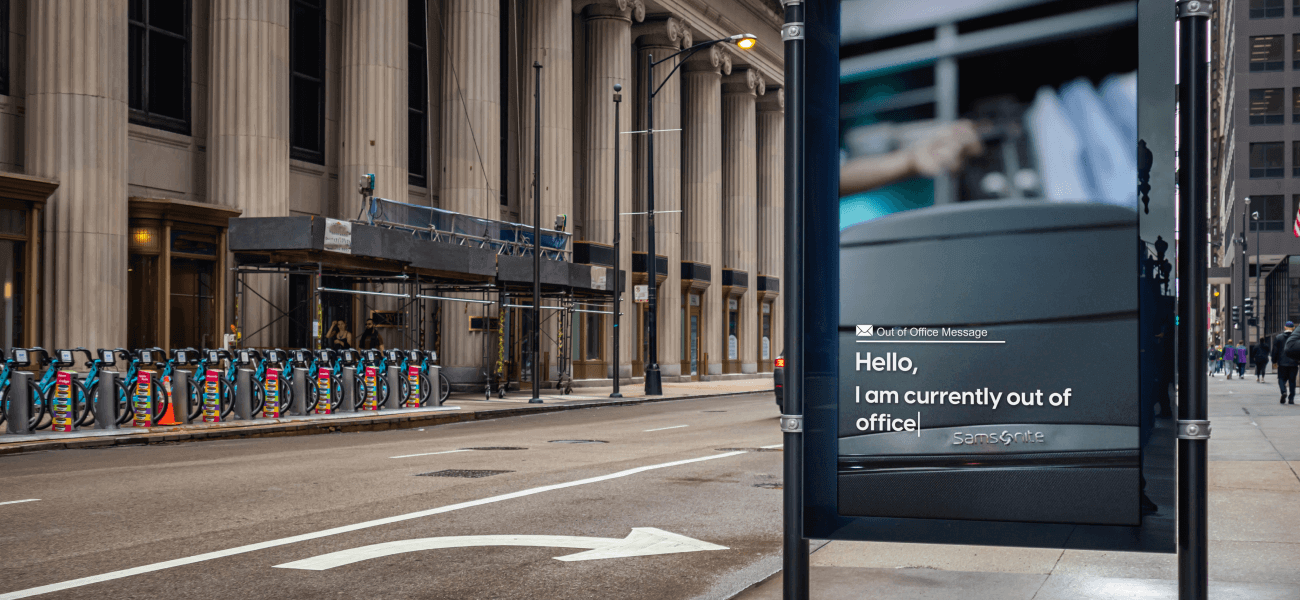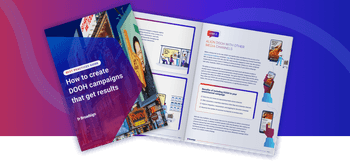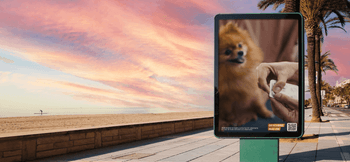Pack your bags and prepare for takeoff – travel and tourism are back in full swing this summer. After a long few years of pandemic-induced restrictions, concerns over COVID-19 have significantly decreased, and consumers are eager to get back out there and seek new experiences away from home. Recent data from the OAAA and Harris Poll found that 89% of U.S. adults plan to travel this summer, up from 85% in 2022. And despite a shaky economic outlook, 32% of consumers plan on spending more on travel this year compared to 2022.
Revenge Travel was a buzzword that floated around last summer, described as the effort to make up for lost time during the pandemic by ‘taking revenge’ on Covid-19 through travel. This summer, however, joy is at the forefront of consumer decision-making. The Harris Poll found that people are more consciously seeking joy and are willing to spend money on experiences that bring it, travel included. 79% of consumers surveyed said they’re more purposeful in spending money to bring themselves joy, and over half (54%) said they wouldn’t stop spending even if the economy worsens. What are consumers willing to give up? Rigid timelines. “While spending intent remains strong – especially in travel and experience-seeking – nearly half of all springtime shoppers are not tied to a specific timeline. Instead, they are moving week-to-week to avoid exposing their household budgets to unnecessary risk,” said John Gerzema, CEO of The Harris Poll.
For advertisers, consumers’ renewed willingness to travel (and with more flexibility) presents a significant opportunity to engage audiences with relevant campaigns. Hotels, airlines, tourism boards, transport service providers, and more should consider out-of-home (OOH) ads to influence potential travellers throughout their journey. Whether the goal is to inspire people to book a trip, promote local businesses, or boost brand awareness, there’s no better way for advertisers to take advantage of increased consumer mobility than with OOH.
Boost brand awareness with contextual messaging
As many travel shoppers know, the travel and tourism industry has become highly competitive over the past few years with the resurgence of international and domestic travel. Low-cost airlines like U.S.-based Spirt, Canada’s Flair, and European Ryanair are capturing the attention (and wallets) of travellers looking for better deals. Hotels and booking platforms are also competing for space in the market, with companies like Airbnb, Sonder, VRBO, and more popping up frequently. The result? Consumers have more options than ever, and brands must ensure they stand out when capturing their attention.
A one-to-many medium, national and local brands can use OOH’s massive reach to drive awareness for their travel and tourism campaigns. One way for advertisers to do this is by placing DOOH ads in key locations where audiences could be thinking about travelling. For example, promoting flight packages to sunny destinations during a cold winter day can boost contextual relevance, especially if the ads are placed along your desired demographic’s daily journey, like during their commute (via billboards or transit screens), in office or residential buildings, bars, and casual dining. Showcasing seasonal promotions during certain times of the year can also be a great way to reach a specific demographic. Young families, for example, are often budget-conscious consumers who look for savings or special offers when planning a vacation. A tourism company looking to promote family day passes for a nearby ski resort may want to consider running promotional OOH ads in malls or entertainment venues during spring break or school holidays.
Brands outside the travel and tourism industry can also capitalize on the travel season. Premier luggage brand Samsonite recently ran its Take What’s Yours campaign across major U.S. cities to boost brand awareness and consideration for its luggage. The ads targeted late Gen Zs and younger millennials with DOOH placements in high-traffic locations like offices, malls, and apartment buildings, promoting Samsonite products while encouraging workers to take advantage of their PTO throughout the summer. The campaign’s contextual messaging led to a 53% increase in purchase consideration among its core audience of 25-34-year-olds – a big win for the brand.

Read Also: How Samsonite’s pDOOH campaign boosted brand KPIs by extending the reach of video ads
Create an omnichannel experience to help increase bookings
With OOH, brands can stay top-of-mind as consumers move from awareness to decision-making when booking travel. The rise in online travel platforms like Expedia and Travelocity has made it easier for consumers to search for the best deals, compare airlines and accommodations, and book their itineraries. According to Statista, 73% of the global revenue in the Travel & Tourism market will be generated through online sales by 2026. Booking a trip isn’t linear, and consumers may interact with a brand several times before committing to booking travel. This is why travel and tourism marketers must ensure they create a seamless omnichannel experience with multiple touchpoints across the path to purchase.
Real-world OOH ads that display messaging for flight deals or travel rewards can encourage audiences to take action online, whether visiting a brand’s website or social media, contacting a travel agent, or booking a trip via a third-party website. Through mobile retargeting, travel brands can geofence specific areas of interest to retarget audiences exposed to OOH ads via mobile devices or other digital channels. For example, a railway company wanting to promote deals on cross-country train tours might want to geofence DOOH screens in train stations. Passersby exposed to the screens during their daily commute can then be retargeted with mobile ads later. Suppose the same company wanted to feature special offers for students. In that case, they can go a step further by geofencing transit screens within a certain proximity to a university. Ads can then be served via mobile devices, encouraging potential travellers to learn more through online research. Incorporating interactive messaging like QR codes into ad creatives is also a great way to drive audiences to interact with your brand, encouraging them to seize limited-time deals or claim exclusive offers.
Utilize OOH for location-specific messaging
Leisure travel, in particular, will see a big increase this summer as consumers seek out new experiences. According to a survey by GetYourGuide, 90% of respondents want to experience a destination “like a local,” and two-thirds of millennial respondents specifically worry about whether it’s an authentic experience. And that’s not all: consumers will go even further this year, with 40% of U.S. adult travellers planning to travel 500+ miles away from home. As people travel to new, further locations, they’ll be interested in local attractions, entertainment, and authentic dining experiences.
OOH can help advertisers reach these audiences with localized content from the moment they arrive at a new destination. The demand for airport advertising is expected to take off this summer, and destination marketers shouldn’t overlook the benefits of targeting audiences from the moment they step off the plane. OOH ads featuring city information like weather or events are a great way to promote businesses as consumers seek out things to do on their trip. Using live data feeds, for example, advertisers can automatically trigger ads for tickets to a sporting event when the city’s team is doing well. Weather data can also be used to trigger messaging for nearby beaches or parks during a hot summer’s day. Airports aside, there are plenty of other locations to capitalize on to drive awareness and consideration for local brands or activities. Consider place-based venue types like malls or gas stations to capture the attention of eager travellers who may not be familiar with an area.
As consumers prepare to hit the road (and the skies) this summer, brands should act now to take advantage of this hot advertising season. Whether consumers are just starting to think about their next holiday or ready to begin the booking process, OOH can reach target audiences when they dream of being elsewhere. If you haven’t already gotten started on your campaign planning, programmatic DOOH (pDOOH) is an excellent way to deploy campaigns quickly and efficiently. The possibilities to amplify travel and tourism campaigns with real-world touchpoints are endless, and programmatic capabilities make it easy for campaigns to be modified based on changing consumer mobility.
Interested in getting started with programmatic DOOH this travel season?
Explore curated audiences in our Travel & Tourism package here!






